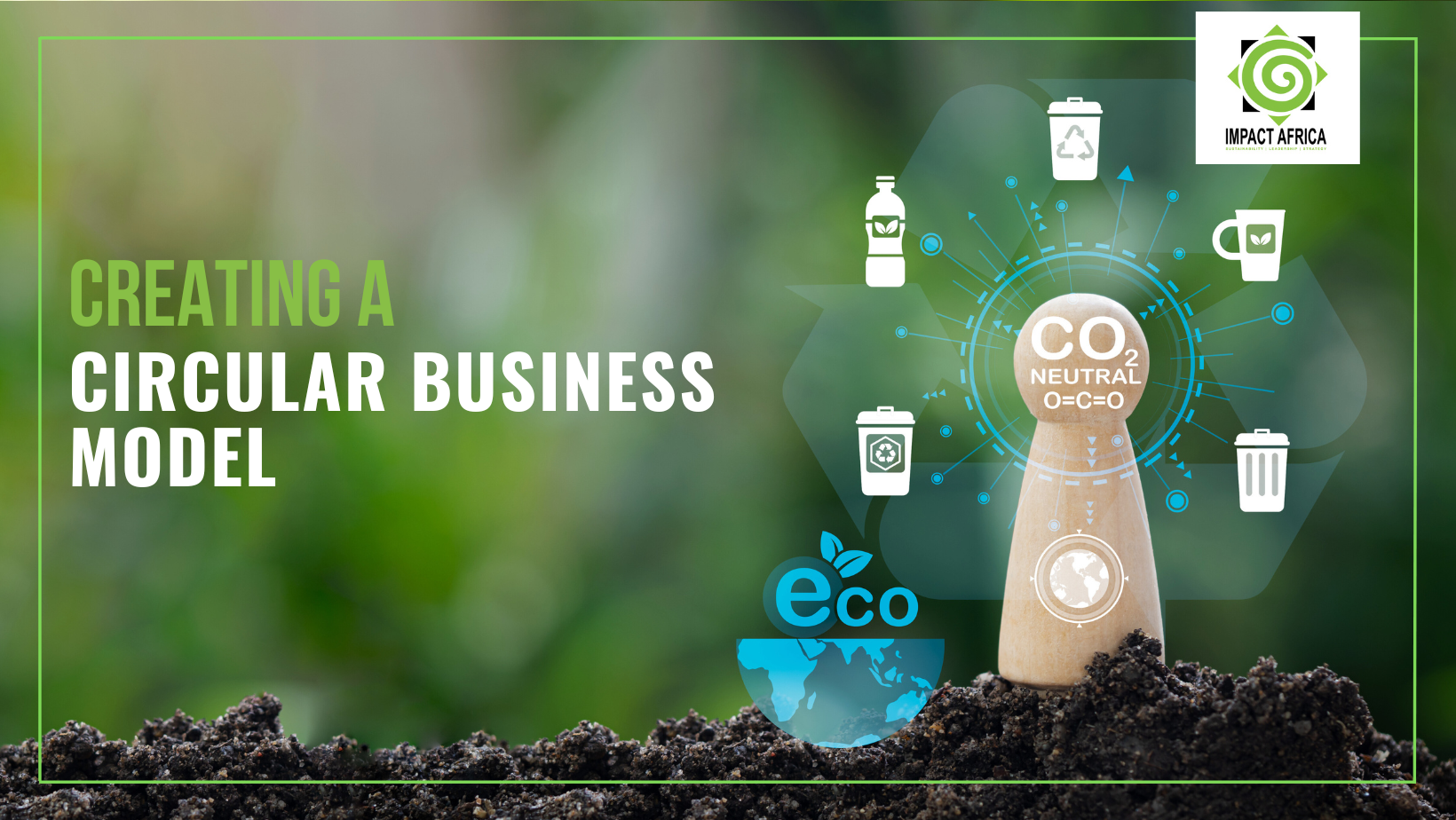 Companies in Africa are increasingly shifting away from the “take-make-dispose” linear economy towards a circular one by creating a circular business model. Unlike the traditional linear model, where products were manufactured, used, then discarded, a circular model seeks to create a closed-loop system where the resources used to manufacture the products are recovered, reused, or recycled to extend their lifespan.
Companies in Africa are increasingly shifting away from the “take-make-dispose” linear economy towards a circular one by creating a circular business model. Unlike the traditional linear model, where products were manufactured, used, then discarded, a circular model seeks to create a closed-loop system where the resources used to manufacture the products are recovered, reused, or recycled to extend their lifespan.
Why a circular business model? Given the apparent prevalent effects of climate change on humanity and businesses, companies need to take responsibility for their impact on climate and the environment. A circular business model helps to reduce and limit the impacts by reducing the amount of virgin materials used to manufacture products, reducing carbon emissions and pollution, and minimizing the impact on biodiversity and natural ecosystems. With changing consumer needs and expectations, there is a growing desire to purchase more sustainable products. Furthermore, the model aids in the development of a resilient business that is fit for future legislation on waste management, with the cherry on top being the potential savings and profits to be generated.
There are five major circular business models that businesses can incorporate. The circular supply model, which entails replacing traditional material inputs derived from virgin resources with recycled, bio-based materials as practiced by Adidas and Nike Grind who recycle used shoes to reduce demand for virgin resources. Dell computers use the resource recovery model to recycle waste into secondary raw materials reducing waste to landfill. The sharing model facilitates the sharing of under-utilized products such as printers and scanners which reduces the demand for new products and their embedded raw materials. The product life extension model extends the use period of existing products, slows the flow of constituent materials through the economy, and reduces the rate of resource extraction and waste generation. Bosch charges a premium for higher quality, durable products with this model. The fifth model is the product service system, where companies offer products as services instead of selling them as in the case of Michelin which leases its tires. Customers pay for the use of a product, while the company retains ownership and responsibility for the maintenance, repair and end of life disposal.
To unlock the most value, companies need to evaluate which combination of the above models will best suit their business. To assess the feasibility of these models, they will need to answer two questions. How easy is it to get the product back? A juice company that uses plastic bottles may opt to recycle the bottles. To make the reverse supply chain work, their customers need to be enthusiastic about recycling, they also need the infrastructure such as reverse vending machines for bottle collection. Without public participation and infrastructure, access to used products for circularity can be challenging. Another element to consider is the existence of secondary markets for selling used products. Consumers tend to be reluctant about relinquishing used products with a high resale value such as construction equipment and power tools making it difficult for original sellers to close the loop. Such businesses would need to introduce expensive trade-in programs to recover products. High value manufacturing companies should therefore consider the leasing model as it is easier to recover products if you own them.
Secondly, how easy is it to recover value from the product? In the reverse supply chain, moving a fridge, for example, will be much harder and more expensive than moving an ink cartridge. It is difficult to recover value when products are intricately constructed. Laptops and smartphones, for instance, are less easily reconstituted than coarser- grained devices such as desktop computers. Finally, the feasibility of value recovery will depend on the availability of cost- effective solutions for reformulating products. If time intensive labor is required, the used products must have enough value left to justify investment.
Answering these questions is quite a challenge for most companies and creating the wrong model can be expensive. Take the case of Interface, a commercial flooring company, that shifted its business model from selling to leasing. It launched ‘The Evergreen Services Agreement’ program, with installation, maintenance and removal of its flooring bundled under one month fee, making it possible to keep used flooring materials out of landfills and recycling the valuable raw materials. The program was run down seven years later as most customers preferred to buy rather than lease their carpets as it was expensive. They later created a model that focuses on what they do best, manufacturing and selling carpets, this time producing modular carpets using sustainable materials.
Fortunately, sustainability consultants can guide businesses by creating a circularity matrix. The two-by-two matrix presents the strategic options for creating a circular business model. It helps to create a model based on how easy it is to access and process products. They also have the expertise to identify areas in the supply chain where circular principles can be applied minimizing inefficiencies in operations and creating models that align with the evolving regulations related to resource use and waste management.
In conclusion, creating a sustainable circular business model calls for companies to choose a pathway that aligns with a company’s capabilities and resources and addresses constraints in operations, which will not only secure the company’s success but also contribute to a legacy of sustainability for generations to come.



